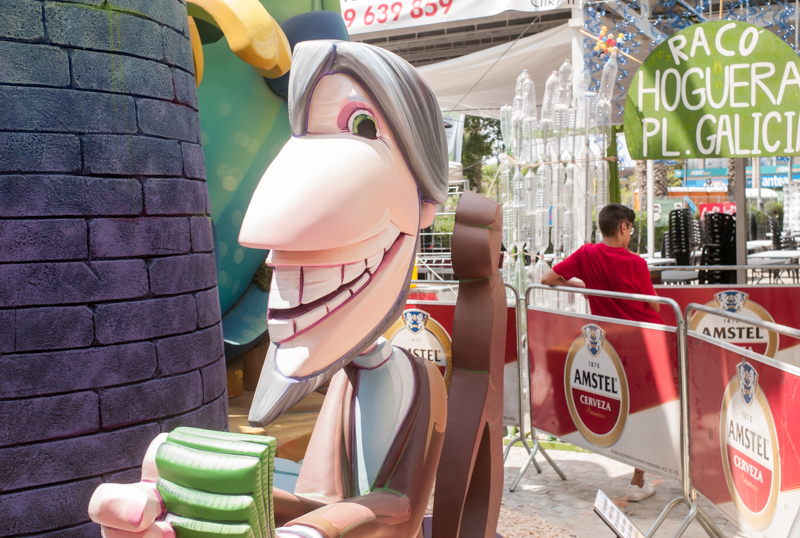A week spent at home, working and enjoying the summer.
25_1
I start the week with a visit to our Sunday morning market. I do not see many people buying books, but I guess it is worth her trouble to come and set up here every Sunday:

25_2
The fruit:

25_3
The olives stand. This is one of my favourites. They have a great selection of olives in various preparations–spicy, stuffed with peppers or anchovies, pitted or not, etc. A real treat:

25_4
In the afternoon I went for my usual pint on the beach. It was windy, and the windsurfers had a good time. But now it was time to pack up:

25_5
As usual, I just sat at a table on the promenade, drank my beer, and watched the people (and dogs):

25_6

25_7
A family of four:

25_8
My only photo from the office this week, lunch in our cantine one day. The standard menu options are meat, fish or vegetarian, and I usually take the fish option. That day it was grilled sardines:

25_9
Friday began with heavy clouds over the sea but as usual, the clouds dissipated during the morning:

25_10
After work on Friday, I stopped in the centre to have a look at the statues put up for the midsummer holiday. On Plaza Galicia, I saw another common seasonal sight, a heavily loaded car with French license plates. These are people of North African origin, living in France, and on the way to visit their families in Algeria during the summer (there is a ferry from Alicante to Oran):

25_11
The midsummer festival here is called Hogueras de San Juan, a week-long party with many city streets closed to set up temporary bars outside, and large installations put up by neighbourhood associations (often with corporate sponsorship), to be admired for a few days before being burned at midnight on the day of San Juan, 24th June. These installations are also called hogueras. This one is on Plaza Galicia:

25_12
This view gives an idea of the size of the hoguera:

25_13
The hogueras are quite elaborate, and often amusing:

25_14

25_15

25_16

25_17
I then walked on to Plaza Seneca where I knew there was another large hoguera, and there is also an Eastern European store where I buy Polish sausage, bread, pickles, beer and other such goodies. It is a stark concrete urban space, but the local people like it, both the skateboarders and people who just want to relax, like this man:

25_18
Lots of people were milling around, looking at the impressive hoguera:

25_19

25_20
Pointing out a detail:

25_21
The top of the hoguera:

25_22
The hogueras often have a connection to current affairs. This year we have had several elections in Spain; there was a general election in April, followed by local and regional elections in May, held at the same time as the election to the European Parliament. So this particular hoguera poked fun at politicians. Here is one, speaking with his butt:

25_23
The listeners:

25_24
There were quite a few risqé elements in this hoguera:

25_25

25_26

25_27
A classic Marxist theme–the well-fed capitalist on the shoulders of a worker:

25_28
On Saturday morning I was back on the bicycle. The road from Aigües to Relleu, a distance of about 15 km, is one of the prettiest stretches of road around here:

25_29
This is one of the highlights of the ride, about 6 km after Aigues and so 22 km from home. Not just because it is a beautiful house set amid almond trees but also because it marks the end of a hard 3 km climb:

25_30
I took a break in Relleu, drinking a Coke on a bench in front of the church, and observing village life. This man, sitting outside his house with his dog, caught my eye. First, the dog was quite alert:

25_31
Then the dog apparently got sleepy:

25_32
Time for a nap–but there is another dog in the house:

25_33
And then a neighbour walked by, and I captured a typical vignette of social life in the village:

25_34
On the way back to Aigües and home, I turned around to take this picture of Relleu from a distance:

25_35
On Saturday afternoon I was back on the beach, looking at life there, one of my favourite weekend pastimes:
